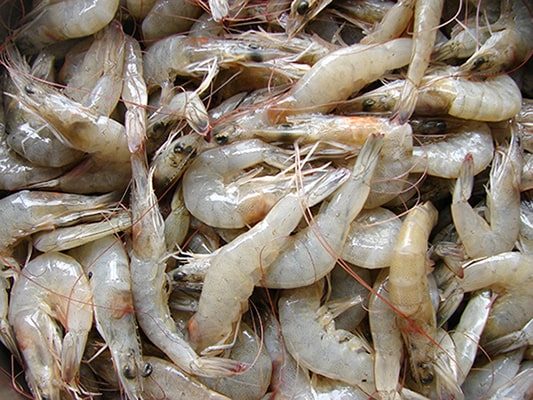OUR PRODUCTS
Our production facilities are meticulously designed and optimized to farm high-quality, sustainable shrimp, a favorite among both avid seafood enthusiasts and occasional consumers.
Leveraging advanced land-based RAS technology, we cultivate superior quality shrimp in a controlled environment. We believe our consumers value the safety of our product as much as its freshness and rich flavor. Rest assured, our shrimp are entirely free of antibiotics, hormones, and GMOs!
SHRIMP
Shrimp have been always at the top of the list of America’s favorite seafoods. These delicious crustaceans come in various sizes, from “small” to extra-large “jumbo.” Their popularity stems from their excellent nutritional value, mild taste, meaty texture, ease of preparation, and versatility. Whether boiled, fried, sautéed, baked, or grilled, shrimp are sure to delight!
Eating shrimp as part of a balanced diet can provide a person with several key nutrients, and it may be surprisingly good for the heart and cardiovascular health in general. In the past, some physicians hesitated to recommend eating shrimp as part of a heart-healthy diet by citing the high level of cholesterol shrimp contains. However, researchers now have a better understanding of cholesterol itself and what contributes to elevated cholesterol levels in humans. Nowadays, the high-density lipids found in shrimp are referred to as “good cholesterol”, and their consumption may even lower blood cholesterol levels.

Additionally, shrimp are an excellent source of the carotenoid called astaxanthin, an antioxidant that acts as an anti-inflammatory agent in the body. Shrimp also contain very little fat and unlike some other seafoods, extremely low levels of mercury – making it a safe choice for consumers. Moreover, shrimp provide several nutrients involved in maintaining bone health and is – above all – an excellent source of protein. A 3.5 oz (100 g) serving of cooked shrimp provides 99 kilocalories of energy, 24 g of protein, 0.3 g of fat, 0.2 g of carbohydrates, 70 mg of calcium, 0.5 mg of iron, 39 mg of magnesium, 237 mg of phosphorus, 259 mg of potassium, 111 mg of sodium, and 1.64 mg of zinc (Source: FoodData Central, U.S. Department of Agriculture).
All in all, when prepared with minimal processing, shrimp can be considered a whole food that is an excellent component of any healthy diet.

